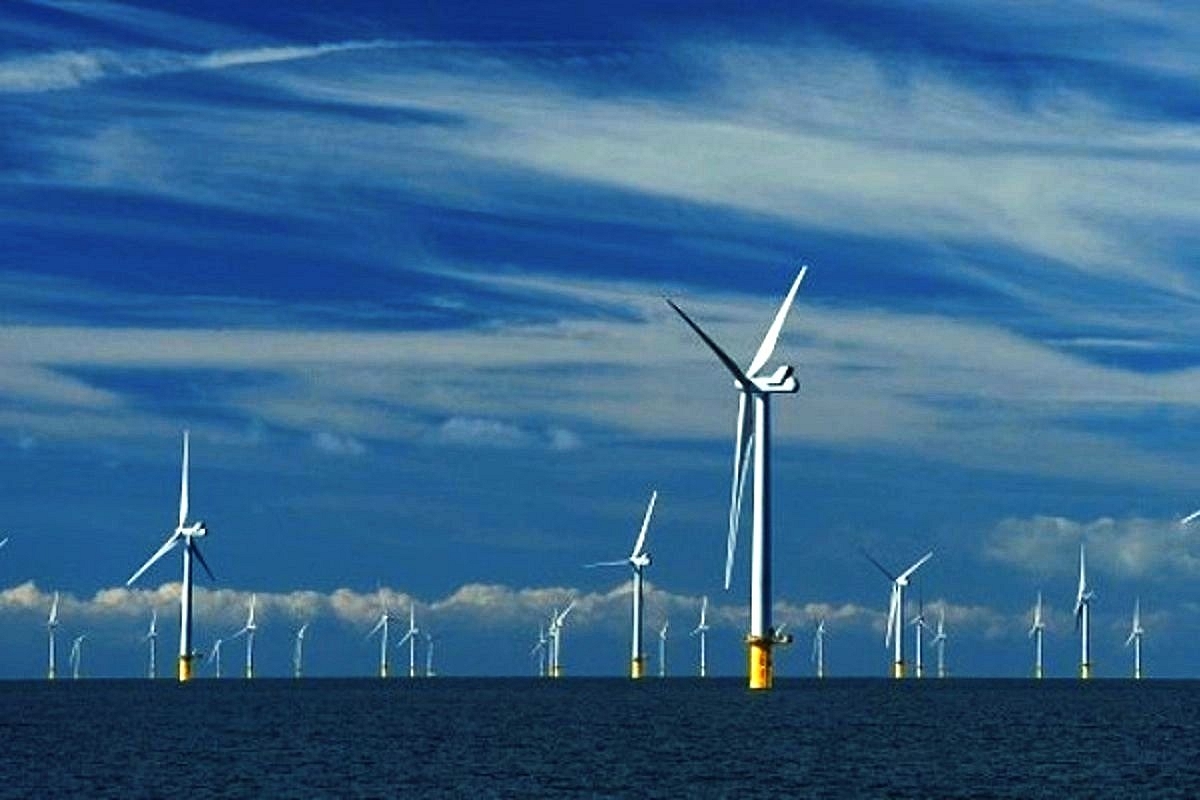Infrastructure
Wind Industry Push: PLI Scheme For Offshore Wind Turbines Under Purview
- Despite having a 7,600-km coastline and a robust policy in the place, the sector has not taken off as anticipated - no offshore wind project has been established in the country till date.

An offshore wind farm (Mike Hewitt/Getty Images)
The union government plans to bring a production-linked incentive (PLI) scheme to promote the manufacturing of offshore wind turbines, a Live Mint report has said. The development assumes significance in light of the long term target of adding 30GW offshore wind energy capacity by 2030.
"Talks are underway among the relevant departments, including the Ministry of New and Renewable Energy (MNRE) and NITI Aayog (for a PLI for offshore wind turbine). However, no decision has been taken yet," said the report.
Industry push
The country already has a Rs 24,000 crore PLI scheme for High Efficiency Solar PV Modules, aimed to boost their domestic manufacturing and reduce the country's dependence on imports from China.
The Scheme has provisions for supporting setting up of integrated manufacturing units of high efficiency solar PV modules by providing Production Linked Incentive on sales of such solar PV modules.
The wind industry has repeatedly urged the centre to launch a PLI scheme for wind energy along the lines of what it offers for high-efficiency solar modules.
Mahesh Palashikar, president of GE South Asia, had raised this issue in an interview in April this year. "Not only wind turbine, but the overall industry, because there's a lot of solar, but not much wind, which is where we offer tremendous value. Offshore wind industry as an area is something we really have been constantly discussing," Palashikar said in reply to a question on the need for a PLI scheme for wind turbines.
Geographical advantage
India is blessed with a coastline of about 7,600 km, surrounded by water on three sides and has good prospects of harnessing offshore wind energy. Considering this, the government had notified the "National Offshore Wind Energy Policy" in October 2015.
The precious land resources required for onshore wind projects are gradually becoming a major constraint. With exhaustion of the best windy sites, offshore wind power offers a plausible alternative.
The absence of any obstruction in the sea offers a much better quality of wind and its conversion to electrical energy. Offshore wind turbines are much larger in size (in range of 5 to 10 MW per turbine) as against 2-3 MW of an onshore wind turbine.
While the cost per MW for offshore turbines are higher because of stronger structures and foundations needed in marine environment, the desirable tariffs can be achieved on account of higher efficiencies of these turbines after development of the ecosystem.
Based on the preliminary assessment from satellite data and data available from other sources, eight zones each in Gujarat and Tamil Nadu have been identified as potential offshore zones for exploitation of offshore wind energy potential.
Initial assessment of offshore wind energy potential within the identified zones has been estimated to be about 70 GW off the coast of Gujarat and Tamil Nadu only.
Reviving the sector
Despite having a 7,600-km coastline and a robust policy in the place, the sector has not taken off as anticipated - no offshore wind project has been established in the country till date.
Considering the fact that in order to achieve the enhanced target of 500 GW of non-fossil fuel based installed energy capacity by 2030; there is a need to harness every possible renewable energy resource, the centre has renewed its efforts to boost wind energy segment.
In June this year, the MNRE said it would issue bids equivalent to a project capacity of 4 GW per year for a period of three years, starting with the current FY 22-23 for development off the coast of Tamil Nadu and Gujarat. Subsequently, a project capacity of 5 GW will be bid out every year for a period of five years, i.e. up till FY 29-30.
The tender for the development of the first 4GW off the coast of Tamil Nadu may come as soon as the next three to four months. The Ministry also announced that evacuation and transmission of power from offshore pooling substations (PSS) to onshore transmission would be provided free of cost for all offshore wind capacities that will be bid out by FY30.
The Ministry recently came up with a strategy paper, identifying three models of development to fast track the process to achieve the offshore wind energy target. The paper also suggested incentives to companies in the offshore wind energy space, like waiver of transmission charges, Renewable Energy Credits, Carbon Credit benefits and Viability Gap Funding (VGF).
Support Swarajya's 50 Ground Reports Project & Sponsor A Story
Every general election Swarajya does a 50 ground reports project.
Aimed only at serious readers and those who appreciate the nuances of political undercurrents, the project provides a sense of India's electoral landscape. As you know, these reports are produced after considerable investment of travel, time and effort on the ground.
This time too we've kicked off the project in style and have covered over 30 constituencies already. If you're someone who appreciates such work and have enjoyed our coverage please consider sponsoring a ground report for just Rs 2999 to Rs 19,999 - it goes a long way in helping us produce more quality reportage.
You can also back this project by becoming a subscriber for as little as Rs 999 - so do click on this links and choose a plan that suits you and back us.
Click below to contribute.
Latest